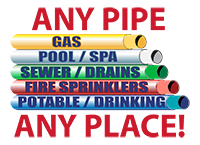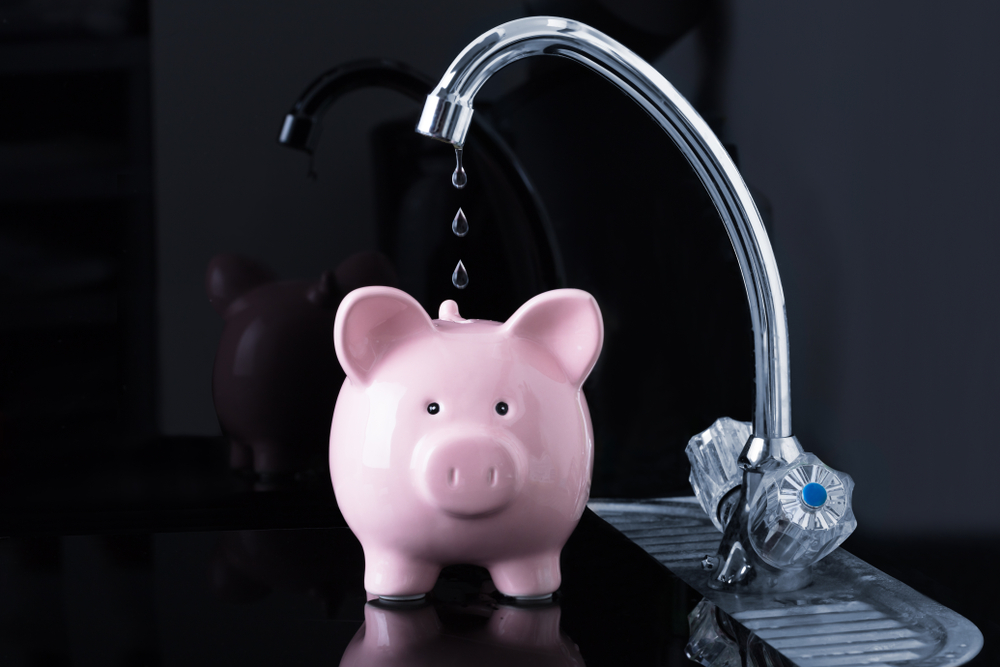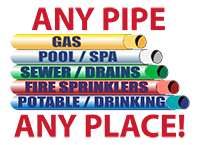What are the benefits of saving water? After all, nearly 70% of the Earth’s surface is water. Why do we need to preserve it then?
It’s true that most of Earth’s surface is covered in water. However, 97% is found in oceans and seas, which is undrinkable seawater.
About 2% of the Earth’s water supply is fresh water. And only 1% is available as drinking water.
Yes, water is an invaluable resource. But, its availability is far from infinite.
As our population grows and climate patterns shift, water scarcity has become a pressing concern.
It is no longer enough just to be mindful of our water use.
What we need are innovative solutions to make a real difference in conserving this precious resource.
Enter pipelining—a technology that promises to revolutionize water conservation.
In this blog post, we will discuss pipelining and the incredible benefits it offers when it comes to saving water.
What Is Pipelining and How Does It Work?
Pipelining for water supply refers to a system of transporting water from its source to the destination using a network of pipes. Most urban areas use this method to ensure a steady and reliable supply of water to homes and other establishments.
It involves using a series of interconnected pipes, valves, and pumps that are laid out strategically to deliver water to different locations.
Here is a step-by-step explanation of how pipelining works for supplying water.
- Water Source: A suitable water source, such as a river, lake, or reservoir is first selected. The water to be supplied will be extracted from this source.
- Water Treatment: Typically, the water is first treated to remove impurities before it is transported through the pipeline network.
- Pumping Stations: These are strategically located along the pipeline network, generating sufficient pressure to propel the water through the pipes.
- Distribution Network: The interconnected pipes form the distribution network. The network is designed to efficiently distribute the water to various areas.
- Valves and Control Systems: Valves are installed at key points in the pipeline network. These valves allow operators to control the water supply, redirect the flow, or close certain sections of the network for maintenance.
- Customer Connections: Smaller pipes that branch off from the main distribution network are connected to individual homes and buildings to provide direct water access to consumers.
Pipelining systems are continuously monitored to detect any leaks, pressure fluctuations, or other issues that may affect the water supply.
What Are the Advantages of Using Pipelining for Water Conservation?
Pipelining offers numerous advantages for water conservation efforts. Some of these include:
- Pipelining allows for precise control and distribution of water, minimizing waste and ensuring optimal usage.
- By using pipelines instead of open channels, the risk of evaporation, leakage, and seepage is significantly reduced. So, there is less water loss.
- Closed pipelines protect water from external contaminants, which ensures better water quality for consumers.
- Compared to open channels, pipelines require less maintenance. So, you spend less time and money on repairs and upkeep.
- Well-designed pipelines have a longer lifespan and are more resistant to natural elements, ensuring sustained water conservation efforts over time.
- Pipelines can be laid underground or above ground. They offer more flexibility in different terrains and minimize disruption to the environment.
- Pipelines can be expanded or modified easily, accommodating future growth and changes in water needs.
We hope by now you have a fair understanding of pipelining. Let’s now look at the various benefits of saving water through pipelining.
10 Benefits of Saving Water with Pipelining
Saving water with pipelining brings about a range of benefits that go beyond conservation.
These 10 benefits highlight the value of using pipelines for efficient water management.
1) Water Conservation
We all know water conservation benefits are immense. One of the significant benefits of using pipelines for water distribution is the reduction of leakage compared to traditional open channels or canals.
Pipelines are typically constructed with materials that minimize leakage, such as high-density polyethylene (HDPE) or PVC. By reducing leakage, more water can reach its intended destination, avoiding unnecessary losses.
Pipelines are designed to transport water with minimal frictional losses, enabling efficient movement over long distances. This efficiency means that less water is required to achieve the same delivery compared to other transportation methods.
By optimizing water transportation, pipelining reduces the overall water demand and conserves this valuable resource.
The California State Water Project is an extensive network of pipelines and canals that transport water from Northern California to various urban and agricultural areas in the state.
2) Cost Savings
Saving water benefits the environment as well as individuals by reducing water-related expenses.
Pipelines are designed to be leak-proof, minimizing water loss during transportation. Traditional open canals or channels used for water supply are more prone to evaporation, seepage, and leakage, resulting in significant water wastage.
By reducing water loss, pipelining helps optimize the utilization of water resources and reduces the need for additional water extraction, treatment, and distribution. This helps save on costs associated with those processes.
Pipelines are also more energy-efficient compared to alternative methods such as pumping water through open channels or using trucks for transportation. They also require less maintenance compared to other water supply systems.
Pipelines can transport water over long distances and have the capacity to serve large populations. Implementing centralized pipelining consolidates water sources, treatment facilities, and distribution networks, eliminating the need for multiple smaller systems. This centralization enables economies of scale, reducing infrastructure duplication costs and improving overall efficiency.
The initial investment for constructing a comprehensive pipeline network can be substantial. However, over the long term, the operational efficiencies and reduced maintenance costs often outweigh the initial capital expenditure, resulting in cost savings for water supply management.
3) Environmental Sustainability
One of the key benefits of saving water for the environment is the preservation of natural ecosystems and the promotion of biodiversity.
Conserving water through pipelining contributes to environmental sustainability. By reducing water wastage, we can preserve precious freshwater resources, maintain healthy ecosystems, and minimize the energy required for water treatment and distribution.
By providing a reliable and consistent water supply, pipelining contributes to the preservation of ecosystems. Sustained availability of water ensures the survival of plant and animal species, promotes biodiversity and maintains the overall ecological balance. This is particularly crucial in sensitive habitats and areas with fragile ecosystems.
Pipelines can also minimize land disruptions. They can be installed underground, reducing the impact on surface habitats, agricultural land, and natural landscapes.
The Sistema Cantareira in Brazil is a notable example of how pipelining supports environmental sustainability through water distribution.
The Cantareira Mountains are part of the Atlantic Forest, a biodiversity hotspot and one of the most endangered ecosystems in the world. The pipelining system allows water to be transported without disturbing the natural habitats and ecosystems of the region.
By preserving the integrity of the Cantareira Mountains, the pipeline supports the conservation of the Atlantic Forest and its diverse flora and fauna.
4) Improved Water Quality
Pipelines provide a closed and protected system for transporting water from its source to the destination. This closed system minimizes the exposure of water to external contaminants such as pollutants, sediment, and microorganisms.
Compared to open channels or uncovered storage facilities, pipelines help prevent contamination, ensuring the delivered water is of higher quality.
Pipelines also provide physical protection against external elements that can adversely affect water quality.
For example, underground pipelines are less susceptible to exposure to sunlight, which can lead to the growth of algae and other harmful microorganisms. Additionally, pipelines are less prone to damage from storms, floods, and other natural disasters that could introduce contaminants into the water supply.
5) Reliable Water Supply
Pipelines are designed to efficiently transport water over long distances. They are constructed with materials that minimize leakage and loss of water during transit. This reduces the risk of water shortages and ensures a reliable supply.
Pipelines often incorporate storage facilities, such as tanks or reservoirs, at various points along the route. These storage facilities help regulate the flow of water, ensuring a steady supply during peak demand or in case of any interruptions in the source.
The Water Transfer Project, also known as the South-to-North Water Diversion Project, is an ambitious infrastructure undertaking in China. It aims to alleviate water shortages in the northern regions of the country by transferring water from the relatively water-rich southern regions.
6) Scalability
Pipelines provide a scalable infrastructure for water supply systems. As the demand for water increases, additional pipelines can be constructed parallel to the existing ones to expand the capacity of the system. This allows for increased water flow and delivery to meet the growing needs of a population or an expanding area.
Water supply pipelines can be designed in a modular and segmented manner, allowing for incremental expansion and scalability. The system can be divided into smaller sections or zones, each with its own pipelines and supply network. This segmentation enables easier management, maintenance, and future expansion by adding new segments or modifying existing ones as required.
7) Reduced Traffic Congestion
By transporting water through pipelines, the reliance on water transportation by road is reduced. This helps alleviate traffic congestion, especially in urban areas where tankers might otherwise be needed.
In areas where water is traditionally delivered by trucks, the installation of water pipelines can eliminate or significantly reduce the need for water trucks to transport and distribute water. This reduction in truck traffic can alleviate congestion on the roads, especially in urban areas.
8) Flexibility
Pipelines can be constructed to reach various locations, including remote or challenging terrains. They offer flexibility in routing, allowing water to be supplied to areas that may have otherwise been difficult to access.
Water pipelines can be designed to accommodate different water demands and population growth. They can be constructed with varying diameters and capacities, allowing for expansion or modification as needed. This flexibility ensures that the pipeline system can adapt to changing water requirements over time.
9) Reduced Dependency on Local Water Sources
Pipelines facilitate the transfer of water from regions with abundant water resources to areas facing water scarcity. This reduces the dependency on local natural water sources, allowing for a more balanced distribution of water.
It mitigates the risks associated with the overexploitation of limited resources. It promotes efficient water allocation and can help address water shortages in regions that would otherwise struggle to meet their needs.
10) Positive Public Image
Water utilities that prioritize water conservation through pipelining demonstrate their commitment to sustainability and responsible resource management. This can enhance their reputation and foster goodwill among customers and the general public.
Access to clean water is essential for maintaining public health and preventing waterborne diseases. Pipelines deliver treated and filtered water directly to households, reducing the risk of contamination and improving overall sanitation. This promotes a positive public image by demonstrating a commitment to the well-being of the community.
Water Saving Tips for Home
The benefits of saving water are immense. Here are some tips to save water at home with pipelining.
- Install a water-efficient pipeline system that minimizes leaks and ensures proper water distribution.
- Use pipe insulation to prevent heat loss and maintain water temperature, reducing the need to run taps for extended periods.
- Implement a re-circulation system that circulates hot water efficiently, minimizing the time it takes for hot water to reach the desired faucets.
- Install pressure-reducing valves to regulate water pressure, preventing excessive water usage and potential leaks.
- Incorporate smart water management systems that monitor water consumption, detect leaks, and provide insights for optimizing water usage.
San Diego Plumbing and Pipelining: Your Pipelining Experts
San Diego Plumbing and Pipelining are your trusted experts when it comes to pipelining and saving water. We understand the importance of conserving water in today’s world, and our cutting-edge pipelining technology is designed to help you do just that. By opting for pipelining solutions, you not only save valuable water resources but also enjoy a range of other benefits.
At San Diego Plumbing and Pipelining, we take pride in being your dedicated pipelining experts. We are passionate about helping you save water, reduce waste, and maintain a reliable plumbing system.







